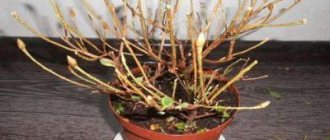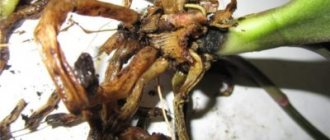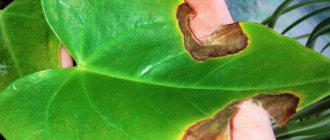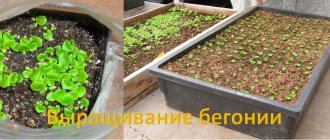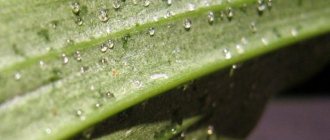What does it look like?
When leaves are affected, the color of the veins or areas between the veins changes. You need to pay special attention to these signs. They indicate a lack of various nutrients. Later we will look at which ones.
Wilting and yellowing of flowers and buds is a very common problem that occurs among azalea lovers. Blooming flowers and buds dry out prematurely and fall off.
Danger to houseplants
The color change is only a symptom. This not only leads to an unpresentable appearance of the azalea, but can also cause more serious consequences.
More often than not, the leaves and buds turn yellow first. If the cause is not eliminated, then the stems will begin to turn yellow and dry along with the leaves. Then this process will reach the roots. And this is a high probability of death of the entire plant (can a dying azalea always be saved and how can the plant be revived?).
The first step is to determine the cause of yellowing and work comprehensively to improve the conditions for keeping the azalea.
Attention: the sooner you start treating azalea, the easier the recovery process will be.
When is it natural and when is it a disease?
Natural yellowing may be seasonal, associated with the plant's dormant period. When old leaves located at the bottom of the stems or flowers turn yellow, this is also natural. In this case, single leaves and faded inflorescences change color.
There are types of azaleas that shed their leaves immediately after flowering. Novice gardeners often get rid of such a plant, deciding that it has died. Don’t rush to do this, check the type of your flower.
Yellowing is painful if the process involves:
- Young leaves.
- A large number of leaves.
- Stems.
- Buds.
- Young flowers.
- If the yellowing spreads quickly.
Video: TEST: recipe for how to revive dried mascara, does it work or not?
When an azalea is sick, the heart always hurts. This is such a beautiful flower that I now don’t understand the time when I didn’t even have the slightest thought of having one at home. It makes it more beautiful and enjoyable, and when it blooms, I can’t tell you in words how beautiful it is.
I have encountered problems such as the leaves completely falling off after the azalea was brought home from the store. In principle, you can understand that the plant sheds its leaves because the conditions of the plant have changed to some extent. Stores often use some kind of special system to support the life of the plant, so it can adapt for a long time to home, natural conditions. As far as I know, in this case they recommend pruning dry branches that no longer have leaves, or lightly pruning active and living branches that have also dropped their leaves.
Why do rhododendron parts change color, dry out and fall off?
Changes in the color of plants, drying and falling leaves and other parts of the rhododendron indicate disturbances in temperature, lighting, watering or soil composition.
Lack of nutrients
How can you determine which element your azalea is missing? To do this, you need to look at the nature of the changes. Are the young (top) or old (bottom) leaves yellowing? Which part of the leaf has changed color: the veins, or the areas between them?
If yellowed:
- Young leaves in the spaces between the veins, this indicates a lack of iron.
- Old leaves between the veins are a lack of magnesium and zinc.
- Veins of young leaves - the plant lacks sulfur.
- Veins of old leaves - lack of nitrogen.
Such negative changes can be caused either by a lack of one element, in azaleas this is most often iron, or by an imbalance of elements. This happens when a lack of some nutrients is accompanied by an excess of others. This situation leads to disruption of the absorption of elements.
Temperature violation
Azalea feels best at low temperatures. Optimal conditions for rhododendron are from +13 to +20 degrees, regardless of the time of year. In fact, azalea can tolerate higher temperatures, but its buds set at temperatures from +8 to +18 degrees.
Important! Unsuitable air temperature or sudden changes in temperature negatively affect the condition of the flower.
Soil and air humidity
Azalea is very sensitive to lack of watering. The flower does not tolerate either stagnation of water in the soil or overdried soil.
As for air, azalea does not tolerate dry air. This is the most common problem in city apartments, and it is from dry air that this flower suffers most often.
sunlight
The azalea will certainly react negatively to the abundance of sunlight and direct sunlight. After such exposure, the leaves will turn yellow, begin to dry out and fall off (how to revive an azalea if it has dried up?).
Pests
In addition to this, the cause of yellowing of the azalea can be a scale infestation. This insect appears as raised brown spots. Affected leaves become dull and become covered with a sticky, shiny coating. Later they turn yellow and crumble.
If scale insects are detected early, it will be enough to treat the leaves with a soap solution. More serious damage requires the use of special drugs.
Read about azalea pests and diseases here.
Photo
See photo of a healthy plant below:
Post navigation
The azalea has dried up, how to save it?
Azalea is very unstable to sudden changes in climate, changes in soil moisture, temperature, composition and fertilizers. The active sun can also serve as a catalyst for its disease, which will lead to the natural drying of the plant. It will begin to shed leaves, flowers will fall off, and it may be difficult to restore its healthy appearance after such shocks.
Garden azalea is less picky, unlike decorative (house) azalea. The latter is famous for its sensitivity to increases in room temperature. Moreover, even a slight jump in degree can be instantly displayed on it. How to prevent azaleas from drying out? First of all, maintain an optimal percentage of humidity in the room, do not place the flower in noticeable proximity to the radiators.
Gardeners often post specific instructions for resuscitating a plant. To create it you need to purchase special tools. Here is the list: ice, sand, cold water, acid (it is better to buy boric or citric acid), pine needles, ash (can be replaced with activated carbon), Zircon preparation. The procedure is as follows: remove the azalea from the pot and place it in a bowl of cold water; after taking a bath, rinse the root system under running water. Then worry about trimming faded leaves and removing flowers. Then transplant the flower into new prepared soil. Add ash or activated carbon and sand to the substrate you have. Leave the azalea to get used to the new land overnight.
What is most often affected?
- Leaves. Most often, azalea leaves turn yellow.
This can be caused by all of the above reasons. It is the leaves that are the first to signal the beginning of problems. Important: do not ignore the change in leaf color. Following the leaves, the disease will spread to other parts of the plant and can lead to its death. - Stems. Yellowing of the stems is a secondary lesion. It occurs following a change in leaf color as the disease continues to progress.
- Buds and young flowers. This is a very common problem. The main reason in this case is dry and warm air.
What to do if parts of the plant are yellow?
Leaves
- Check leaves for parasites. If you see insects, treat the plant with a soap solution. If a significant part of the flower is affected, it is worth using chemicals.
- Remove the flower from the draft.
- Remove the flower from direct sunlight.
- Check the ambient temperature. During the heating season, place the flower away from the radiator. If this is not possible, ventilate the room regularly. In summer it is also worth putting it in the shade.
- Check soil moisture.
If there is excess moisture, dry the earthen ball. If the soil is dry, water the plant and normalize watering in the future. Avoid drying out or waterlogging the soil; it should be slightly moist. You can water the azalea by immersing it once a week for 20-30 minutes. After such watering, you need to allow excess water to drain. Watering from above or through a tray will also work. - Watering should be done with softened water. This can be achieved by boiling or acidifying the water. To do this, add 3-5 drops of lemon juice or 5 grains of citric acid to the water.
- Humidify the air. Spray the leaves 1-2 times a day. A low tray with water and pebbles, in which there will be a flower pot, or an air humidifier located nearby will also help.
- Feed the plant with complex fertilizers according to the instructions on your product. This will help keep all microelements in balance and save you from having to determine what your beauty is missing.
It happens that a flower suddenly drops all its leaves. This occurs due to sudden changes in detention conditions:
- Azalea stood in a draft.
- The temperature changed sharply.
- You have moved the plant to another location.
If your flower has dropped all its leaves, remember what changes have occurred in caring for it. Return to the previous conditions.
Attention: during the flowering period, azalea is most capricious. At this time, you should not move the plant. It is also not worth spraying a blooming azalea. During this time, use other moisturizers.
Stems
As we already said, azalea stems do not turn yellow on their own. This occurs after the leaves change color. Therefore, you need to do the same steps as when the leaves turn yellow. They are described in detail above.
buds
- Reduce air temperature.
- Humidify the air.
Azalea will feel great outdoors, in the shade, out of direct sunlight. The favorable period for this is from spring, after warm weather sets in, before the onset of autumn cold weather. At this time, the plant can be taken out to the balcony, or planted directly on the street.
Yellowing is not the only problem you may encounter when growing azaleas. Read about why the edges and inside of azalea leaves turn black and why they fall off, as well as why azalea leaves grow very light and undergo other changes, and how to save the flower.
Further care
The main components of proper care:
- diffused light;
- abundant infrequent watering;
- loosening the soil;
- maintaining soil acidity levels;
- low air temperature in the room with the azalea.
Sufficient air humidity for this plant is 80%.
It is better to apply complex fertilizing in the spring. Special fertilizers are suitable for these purposes:
- to stimulate the formation of inflorescences, compositions with phosphorus and potassium are added;
- for shoot growth - nitrogen compounds.
It is better to prune bushes in May. Old or very elongated shoots must be pruned. 14-20 days after pruning, the bush is covered with new leaves.
Watch a video about proper care of azaleas.
So, azalea is a whimsical and capricious flower. Violation of care leads to the appearance of dangerous symptoms and conditions. The plant needs to be revived or saved if there is massive yellowing, wilting, or death of leaves and other organs. Measures and methods of revival depend on the exact cause of the phenomenon.
The azalea has dried up, how to save it? Features of caring for azalea Azalea is a very beautiful and unusual plant. But at the same time, it is quite delicate and requires care. This is why the plant is very often susceptible to various diseases and troubles, including the azalea may dry out or lose all its leaves. Features of the plant Azalea (rhododendron) is an ornamental shrub that can decorate a home with its blooms at any time of the year.
